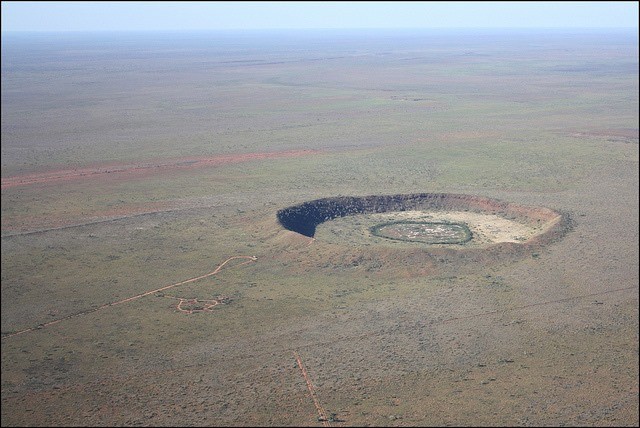
A study by an international research team from the University of Wollongong has shed new light on how often large meteorites strike the Earth.
The research led by Professor Tim Barrows focused on Wolfe Creek Crater, one of the largest meteorite impact craters in Western Australia and the second largest on Earth, where meteorite fragments recovered by scientists. The largest of which is the Meteor Crater located in the state of Arizona in the United States.
Wolfe Creek Crater was created by a meteorite measured to be approximately 15 meters in diameter and weighing around 14,000 tonnes. The meteor was probably traveling at 17 kilometers per second and struck with the force of 0.54 megatons of TNT.
The new study, published in the journal Meteoritics & Planetary Science, discovered that the impact most likely occurred nearly 120,000 years ago-much later than the previous estimate of 300,000 years ago.
Debris from outer space continually bombards the Earth, but only the most prominent objects survive the journey through the atmosphere to hit the planet's surface and leave a crater. The researchers were able to calculate how frequently such results occur with the help of discovering the accurate age for the Wolfe Creek Crater impact.
Professor Barrows - a Future Fellow in UOW's School of Earth, Atmospheric and Life Sciences - said there are seven sets of impact craters in Australia dating to within the past 120,000 years including the Wolfe Creek Crater.
The professor said the craters are only found in the arid parts of Australia. Barrows noted that holes are destroyed elsewhere by geomorphic activities such as slope processes in the mountains and river mitigation.
"We could extrapolate a rate for the whole Earth since Australia has an excellent preservation record with dated craters within the arid zone," he added.
"Taking into [report] that arid Australia is only [around] one percent of the surface, the rate increases to one every 180 years or so," Barrow said.
The calculation is just a minimum estimate, he said, since some smaller impacts were probably covered by sand during the ice age. Barrow explained that the amount of large objects is perhaps 20 times the number since stony meteorites are far more common. However, not as many withstand the fiery trip through the atmosphere or effectively make craters.
The results gave the researchers a better picture of how frequent the events are. Professor Barrows and his team used two techniques to date the crater. The first technique is they estimated the length of time a rock exposure at the Earth's surface to cosmic radiation. The second technique is measuring how long since sediment was last exposed to sunlight.
The researchers also built a new 3-D topographical crater representation through aerial photographs captured by Ted Brattstrom, a Hawaiian high school teacher who flew across the crater in 2007, taking photos of it from some different directions. The researchers used the photographs to determine the crater's dimensions.
The researchers were also able to recalculate the age of the Meteor Crater in Arizona using the same geochronological dating techniques. They found it is likely to be 61,000 years old, more than 10,000 years older than previously deemed.
© 2025 NatureWorldNews.com All rights reserved. Do not reproduce without permission.




